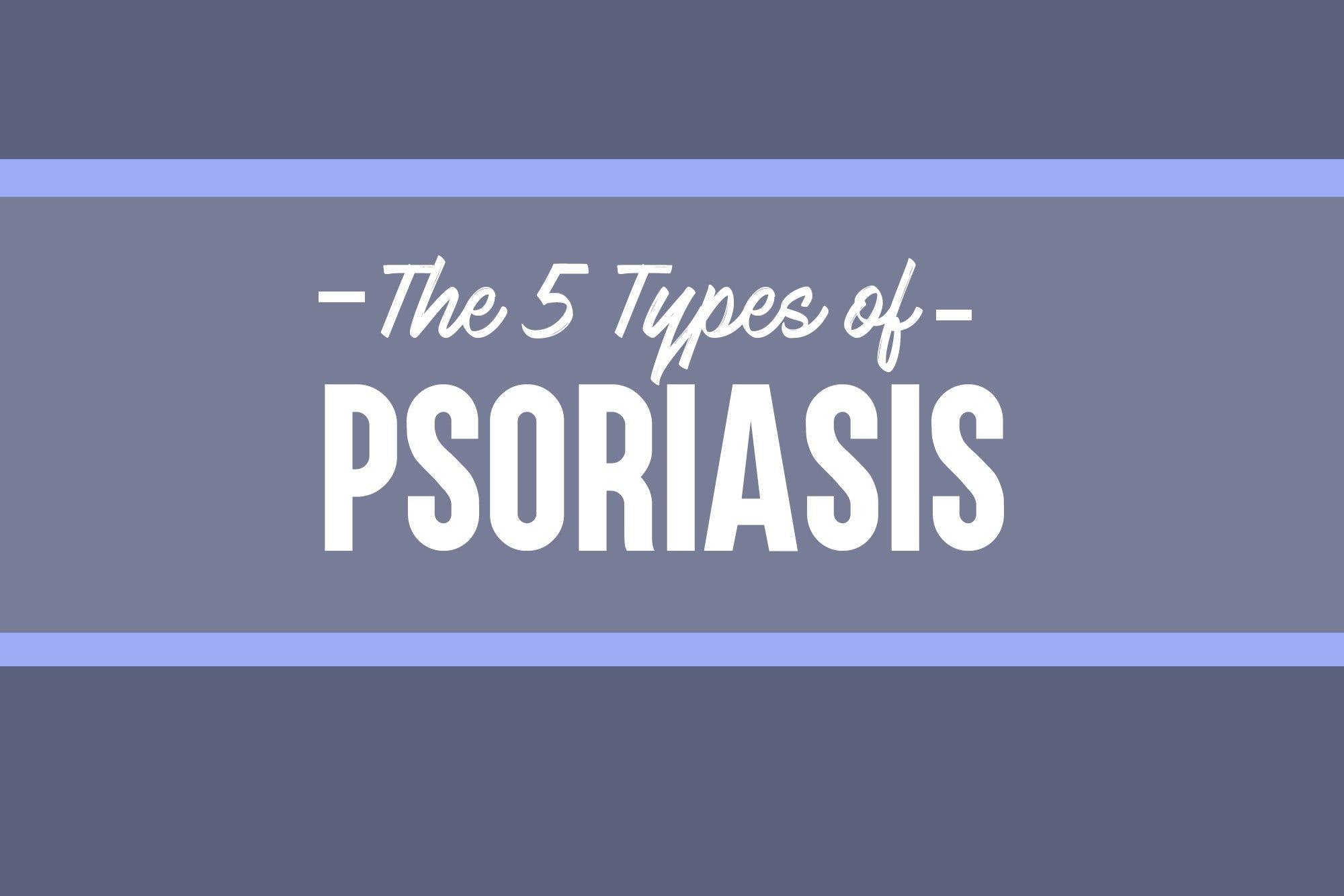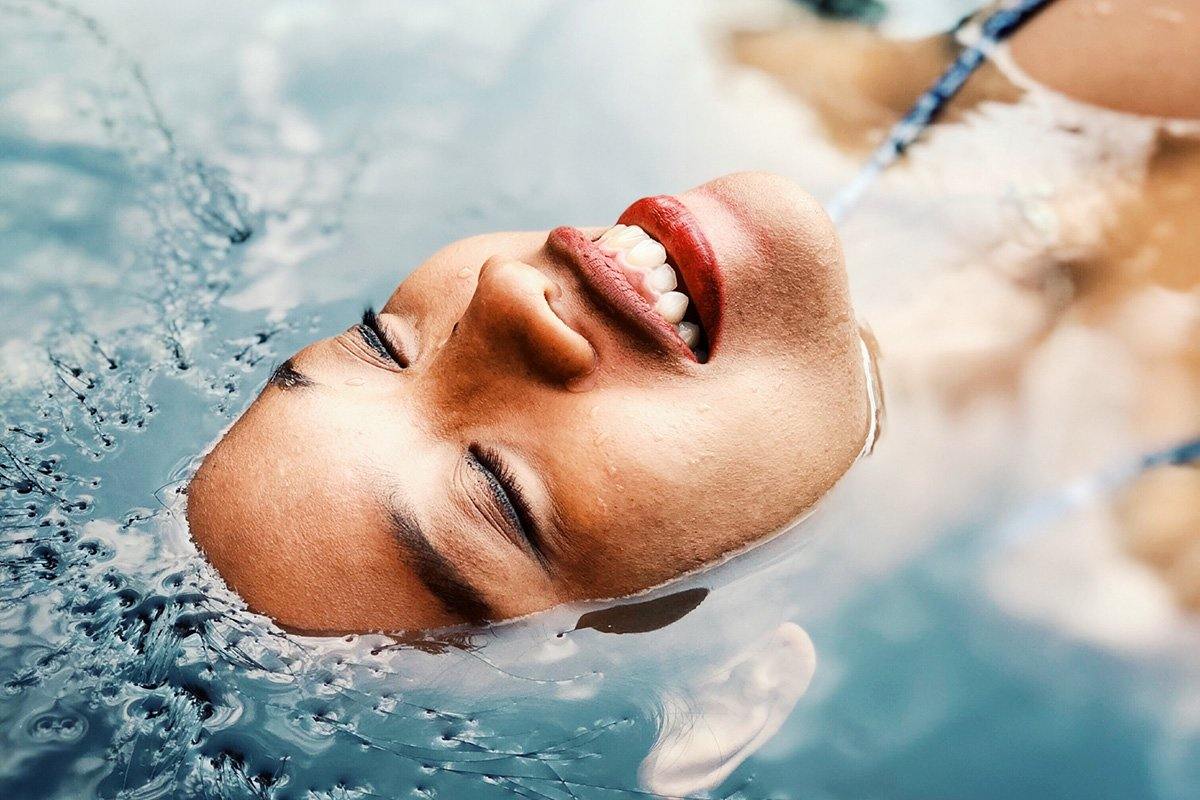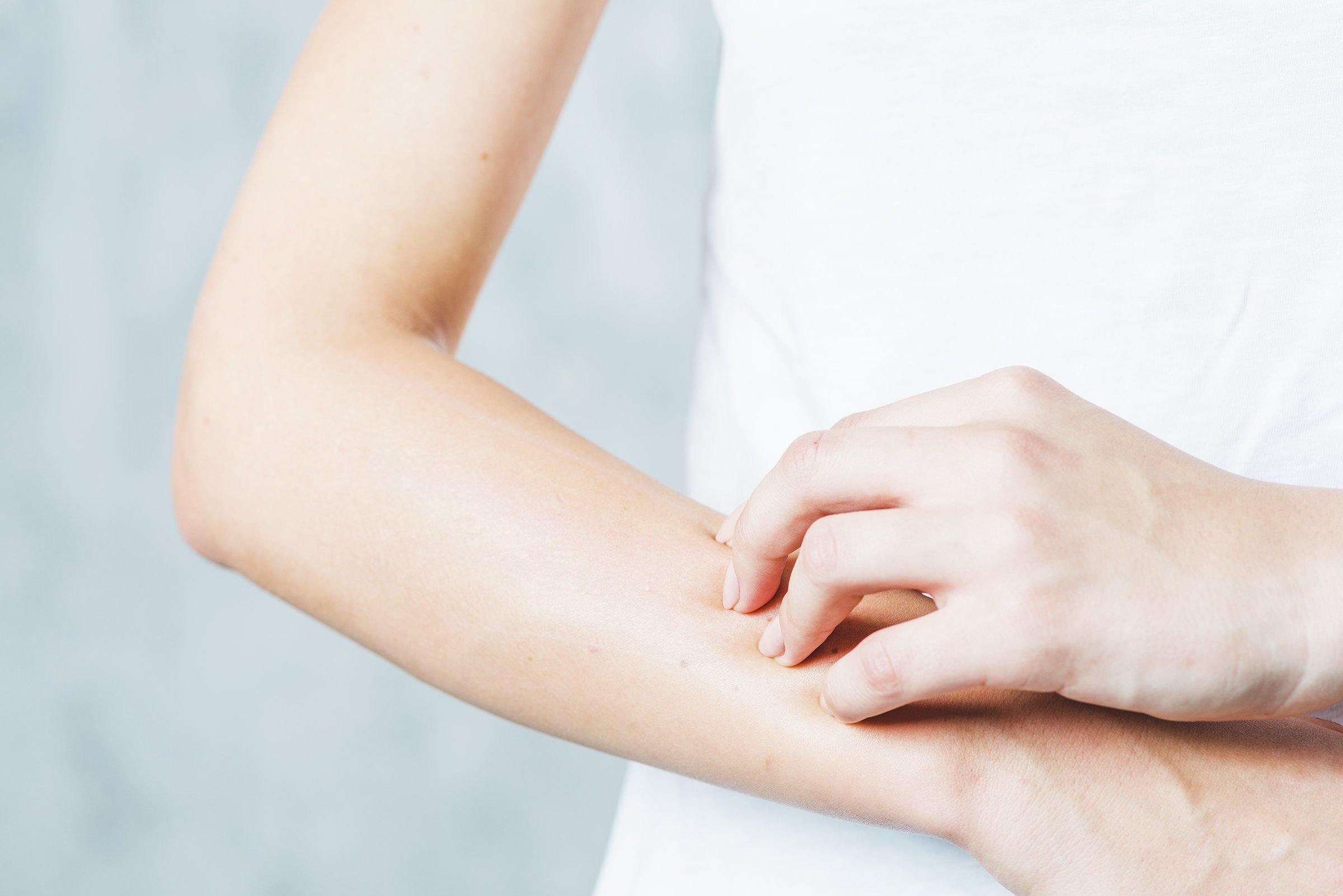
GUIDE: 5 Different Types of Psoriasis Explained
Psoriasis is an immune system mediated disease that causes excessive skin cell production resulting in patches of thick, itchy, inflamed, and sometimes painful skin. But did you know that not all psoriasis is the same? In fact, there are more than 5 types of psoriasis and symptoms can affect more than just the skin. Unfortunately there is no cure for psoriasis, and naturally, there is no one skin solution that works for everyone.
This guide is not a replacement for consulting with your doctor or specialist for a proper diagnosis but instead, a starting place to help you better understand psoriasis and your skin.
Let’s take a look at the 5 main types of psoriasis.
Plaque Psoriasis
When most people think of the term “psoriasis”, they are likely referring to a condition called Plaque psoriasis. That’s because about 80% of people who suffer from psoriasis have plaque psoriasis. It’s characterized by raised red, inflamed skin with white or grey plaque-like scales appearing over the rash. It can affect any area of the skin but it is most common among the elbows, knees, scalp, and back.
CAUSE
The cause of plaque psoriasis is a combination of both genetic and environmental factors. Genetics plays a large role in the disease as one-third of those with plaque psoriasis also have a relative with the disease. Environmental factors such as stress, skin trauma or injury, infection, and allergic reaction to certain medications can also lead to plaque psoriasis.
TREATMENT
Unfortunately, plaque psoriasis is a chronic condition and can’t simply be cured. Since flare ups can break skin due to scratching and inflammation, keeping skin moisturized is key to containing. Prescription topical steroid creams can be used to reduce the rate of skin cell production, but can thin out healthy skin. Retinoid creams contain vitamin A derivatives, which can help decrease inflammation. A natural topical treatment with salicylic acid can aid in cell turnover to alleviate psoriasis symptoms and minimize the appearance of plaques. The most important thing though is to develop a diet and lifestyle that reduces your psoriasis triggers. And don’t forget to drink plenty of water to moisturize your skin from within.
Guttate "Drop" Psoriasis
Guttate or “drop” psoriasis is characterized by a rash that includes many red spots with a drop-like appearance. It shares the same scale symptom as plaque psoriasis but the scales may appear smaller and more subtle than plaque psoriasis. It can appear on any part of the body but it’s most common on the arms, legs, scalp, and torso.
CAUSE
The root cause of guttate psoriasis is quite different than plaque psoriasis. It usually happens after a throat infection or strep throat. After the infection clears, the immune system can still be overactive and and start attacking your skin to bring on guttate psoriasis. This can even happen a few weeks after an infection has cleared.
TREATMENT
The good news for guttate psoriasis sufferers is that it can simply go away over time. In most cases, it goes away in just a few weeks. Unfortunately, that is not always the case and it can become a chronic condition that will not go away. However, chronic guttate psoriasis is quite rare. Treatment for guttate psoriasis is similar to plaque psoriasis. Keep affected skin moisturized and use topical creams to reduce itching and inflammation. Corticosteroid creams can be useful to treat sudden flare-ups. Since you may not have to use it for very long, it can reduce the chance of side effects. You should also consult your doctor to get a proper diagnosis since guttate psoriasis can be misinterpreted for even worse conditions.
Inverse Psoriasis
It’s called inverse psoriasis because the condition affects the “opposite” locations of where plaque psoriasis typically occurs. This means that it shows up in the more hidden areas of the body including the genitals, armpits, and other inner folds of the skin. Most people with inverse psoriasis also have another form of psoriasis (typically plaque psoriasis). Since inverse psoriasis flare ups appear in the moist areas of the body, the lesions are red and smooth with little to no scales.
CAUSE
Inverse psoriasis is caused when someone already has psoriasis but has skin folds in which more psoriasis can form. Inverse psoriasis is very painful and makes doing simple things challenging. The root cause of inverse psoriasis is the same as the root cause of whatever “parent” form of psoriasis you may have. Typically, this is plaque psoriasis that is caused by genetics and environmental factors. However, sweat and friction between skin folds, or a fungal infection can trigger outbreaks.
TREATMENT
To alleviate inverse psoriasis symptoms, it’s important to reduce friction and heat in the affected areas. We recommend that you wear loose clothing and reduce the skin rubbing in the folds. This may be challenging, but it will help to alleviate the pain and reduce further skin damage. Beyond that, avoid potential psoriasis triggers and drink lots of water. Unlike other forms of psoriasis, you do not need to moisturize inverse psoriasis but can try to use a product that reduces direct skin to skin contact, such as a petroleum free ointment.
Pustular Psoriasis
Pustular psoriasis is quite different from other forms of psoriasis. Instead of getting a scaly rash, pus-filled blisters (pustules) form on the skin. The blisters are filled with white blood cells that are trying to fight a disease due to an overactive immune system, and it is non-infectious pus. It usually occurs on the hands and feet, and often appears in conjunction with other types of psoriasis. The pustules appear as small white dots across the affected area, giving it a distinct appearance. It also can come with the psoriatic scaling.
CAUSE
Pustular psoriasis can be caused by another form of psoriasis or it can appear on its own from withdrawal from steroids, drugs like salicylates or lithium, or cutaneous infections. Excessive sunlight and pregnancy can also trigger pustular psoriasis.
TREATMENT
If you think you might have pustular psoriasis, go see a doctor right away. There are different types of pustular psoriasis with different degrees of severity (even life threatening). Depending on the severity and type, treatment ranges from oral steroids to topical creams. Most importantly, healthy lifestyle changes can help reduce symptoms and limit outbreaks. It’s critical that you follow the doctor’s treatment plan for this type of psoriasis. For those who get it in childhood, it can sometimes go away on its own. For others, the condition can be chronic.
Erythrodermic Psoriasis
This is one of the most severe forms of psoriasis that causes a rash on the entire body, with skin that takes on the appearance as if it were burned. Erythrodermic psoriasis is typically a complication with plaque psoriasis. Instead of the typical psoriatic scales, the skin sheds off the body in entire sheets.
CAUSES
Erythrodermic Psoriasis is a rare disease that is caused by certain triggers in people who already have some form of psoriasis. This can include sunburn, severe stress, steroids, excessive alcohol use, or withdrawal from certain medications.
TREATMENT
Due to the severity of Erythrodermic Psoriasis, you need to see a doctor or dermatologist if you have it. Prescription medication is usually used. Treatment also involves avoiding triggers to eliminate the flare-ups.
CONCLUSION
Since psoriasis is a chronic disease, it may seem like there’s no hope for those who have it. However, that isn’t true. Even famous people like Kim Kardashian have psoriasis, in addition to the 125 million people worldwide who suffer from it. Psoriasis is common, but it affects everyone differently.
A common remedy among those who are successfully battling psoriasis is developing a lifestyle that allows them to reduce the chance of flare-ups. Maintaining a good diet, quitting smoking, drinking less or no alcohol, and drinking plenty of water can be the first steps to a huge difference in quality of life. In addition to that, incorporating topical moisturizers and creams in your relief plan will give you the best chance to win your skin back.
Living with psoriasis isn’t easy. Those unlucky enough to have it know this all too well. Joining psoriasis support groups can be helpful to get advice and emotional support. Remember that you are not alone. Check out our Facebook and Instagram to learn what has worked for some of our psoriasis warriors.



8 comments
scalp psoriasis, which has spread, nothing stops it for long, only calms it down for a day or two, will this help
marlys serkin
I’ve bought lots of creams but none seen to work i hate to buy another one if it doesn’t work, can you send a small sample tube or something to try it, you have to know what we are going threw when your a 67 year old Senior citizen our budget is not so good, i hope you can help us please.
Sam Faz
Samples would be great !!!!
Bren
Battling scalp psoriasis, dermatologist says it is cradle cap, but I’d bet the farm it is not. Will this product really work or is it just another money grabber?
Jan Meeks
Do you have samples that you could send out?
Sue
Need help with scalp psoriasis
Wanetta Fontenot
This disease is very depressing
Barb Rouse
I’m looking for information on Scalp Psoriasis..
Marjorie Harris
Leave a comment
This site is protected by hCaptcha and the hCaptcha Privacy Policy and Terms of Service apply.